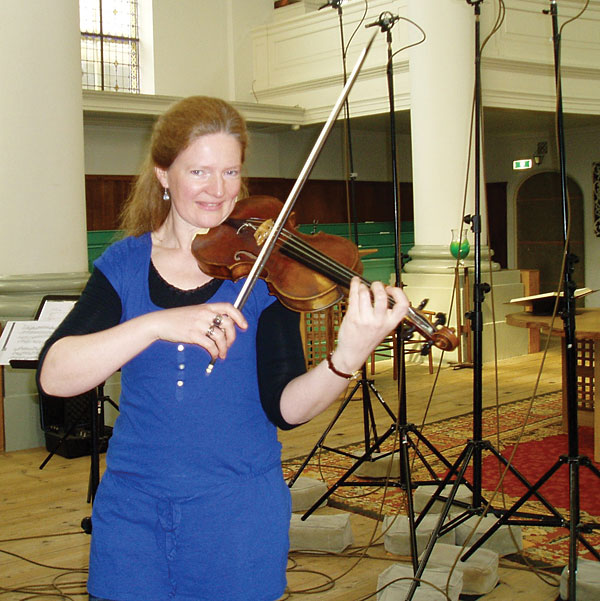| Columns Retired Columns & Blogs |
Very nice write up, Kal. Yes, you are correct, in that, any venue is only as good as its inherent acoustical space. One such magical place that comes to my mind is, L'Olympia Theatre in Paris, France.

The concert seemed to me to be badly programmed, and I predicted that the three Beethoven symphonies to be performed—1, 2, and 5, in that order—would lack variety. How wrong I was. Fischer announced that the intermission would take place between the first two and last two movements of Symphony 2, and that it would be the occasion for changes in the orchestra's personnel. We heard Symphony 1 (one of my favorites) and half of Symphony 2 (not a fave) with a small orchestra such as would have been familiar to Haydn and Mozart—but Beethoven, from the beginning, was infusing his music with raw emotion and greater power. From our seats on the right side of the floor about midway back, the orchestra sounded clear and direct, but hardly filled the hall.
After the break, all sections of the orchestra were augmented, most notably the brass and timpani. When Symphony 2 resumed, the sound was bigger, with wider dynamic range, but it was still clearly characterized by the hall's capacity to focus the sounds of individual instruments directly at the listener. And in the magnificent Symphony 5, the sound got larger still, even when it was not louder, and even with the added power, the hall's acoustic retained its characters of clarity and focus. Fischer had clearly demonstrated, and the hall had revealed, how Beethoven was changing his style as he matured.
The next night, at the Musikverein, in Vienna, we heard a concert of Stravinsky's Petrouchka and Ravel's Piano Concerto for the Left Hand and his Daphnis et Chloé Suite 2, with Daniele Gatti and the Orchestre National de France. Here the sound was suffused with a richer ambience that didn't diffuse the focus of the instruments so much as present them with an acoustically bigger sound. Fischer's analysis-by-performance would not have been as transparent here, but with the Musikverein's support, the ONF sounded appropriately ripe and fluid, particularly in Daphnis et Chloé.
But the best demonstration of the effect of acoustics on instrumental sound was during a visit to Haarlem, back in Holland, where Jared Sacks was recording violinist Rachel Podger for Channel Classics (see photo). We arrived at a small, old, wooden church, now a Mennonite sanctuary, during a break in the recording enforced by the rehearsals of the resident women's choir, which we could hear only through the doors. When Podger, Sacks, and Channel Classics' Tom Caulfield returned, we entered the church, where Sacks told us of its history as a recording venue, including many recordings in Telefunken's Das Alte Werk, which, along with Deutsche Grammophon's Archiv series, introduced many baby boomer listeners to the glories of baroque and renaissance music. While the church looks plain, when Podger put her bow to the strings of her 1739 Pesarini violin, the sound came alive from all around us. The instrument sounded warm, full, and preternaturally vivid. I was only a few feet from her, and it sounded distinct as an instrument, but its sound was inseparable from the ambience. That support of the sound of an instrument by a hall's ambience, as we had heard in the Concertgebouw and the Musikverein, cannot be properly reproduced except by multichannel recordings played through multichannel audio systems. I can hardly wait for the release of this one.

The Trinnov Optimizer
I reviewed a Sherwood R-972 audio/video receiver in the May 2010 issue ($1799.95 at that time) because I wanted to try Sherwood's implementation of the Optimizer from Trinnov Audio. But I go way back with Trinnov. At an Audio Engineering Society convention in Manhattan more than 10 years ago, I witnessed a demonstration in which a Trinnov representative moved the sounds of instruments around the soundstage at will, using a Trinnov-equipped mastering console. It deeply impressed me, although, at the time, I had no idea how it could be useful to me. Since then, my involvement in multichannel sound has blossomed.
The Optimizer's suite of tools was severely pared down for the Sherwood R-972, but the potential was clear. However, this AVR was something of an overreaching product for Sherwood, and had several operational quirks. Though it seems to have disappeared from Sherwood America's product roster, the R-972 has developed a bit of a cult following; NOS units can still be found at attractive prices.
My experience of the R-972 whetted my appetite for the full Optimizer, and ever since, I've been corresponding with Curt Hoyt, an independent consultant who is also Trinnov's director of USA operations (footnote 1). The abiding issue is which model to choose. No Optimizer model has all the features I need for 5.1-channel audio, including both analog and digital inputs, that doesn't also bristle with lots of features I don't need.
The model ST2-HiFi ($7000, based on the June 2013 exchange rate) has analog and digital ins/outs, but only four channels. The Magnitude32 can be order with anywhere form 4 to 32 channels, but all ins/outs are analog. The Amethyst has everything, including a phono stage, but it's a two-channel preamp. The audio-only Ovation Cinema Processor is on the way, but it seems intended for use in commercial movie theaters (footnote 2).
The Optimizer is included in all of these models and, after a few years of hearing my pleas, Hoyt agreed to send me a full-blown MC Processor ($13,000) configured so that I could feed it eight channels of balanced analog input and three S/PDIF digital inputs, and get from it eight channels of balanced analog output. The MC's modular architecture makes it possible for users to configure it to their particular requirements. The Optimizer's operation and performance are identical across the Trinnov line. Everything that follows applies to all models.
What the Optimizer does
First, it measures each speaker's responses of frequency (direct and time-integrated), phase, and impulse, and its relative volume level and distance from the microphone. These measurements can and should be examined and, perhaps, repeated at various levels to determine which measurement set best represents the characteristics of the speaker and room that need correction. Since I was using bass management, there was little need to compensate for the deepest bass response in the main channels. So before imposing bass management, we steeply cut the sub-40Hz response of the front channels and the sub-80Hz response of the surrounds. Conversely, we also cut the response above 200Hz of my two subwoofers. In addition to bass management, the Trinnov can also implement complex crossover functions for active speakers, but I didn't venture there.
Second, Trinnov's special calibration microphone (provided), with its central tall element surrounded by three shorter elements, allows the resolution of the horizontal and vertical angular disposition of each speaker. The value of this is the mapping of the speakers in 3D for comparison to ITU and SMPTE standards for the placement of speakers in a surround system. One can use this to reposition the speakers, or electronically remap them to conform to one of these standards.
Footnote 2: Audio Design Associates (ADA) in New York City offers Trinnov Optimizers with analog ins/outs, in 4-, 8-, and 12-channel versions. Though functionally equivalent to the Trinnov-sourced products, they differ in providing useful front-panel controls in addition to Trinnov's standard OSD and network-based menu system. Click here for details.

Very nice write up, Kal. Yes, you are correct, in that, any venue is only as good as its inherent acoustical space. One such magical place that comes to my mind is, L'Olympia Theatre in Paris, France.